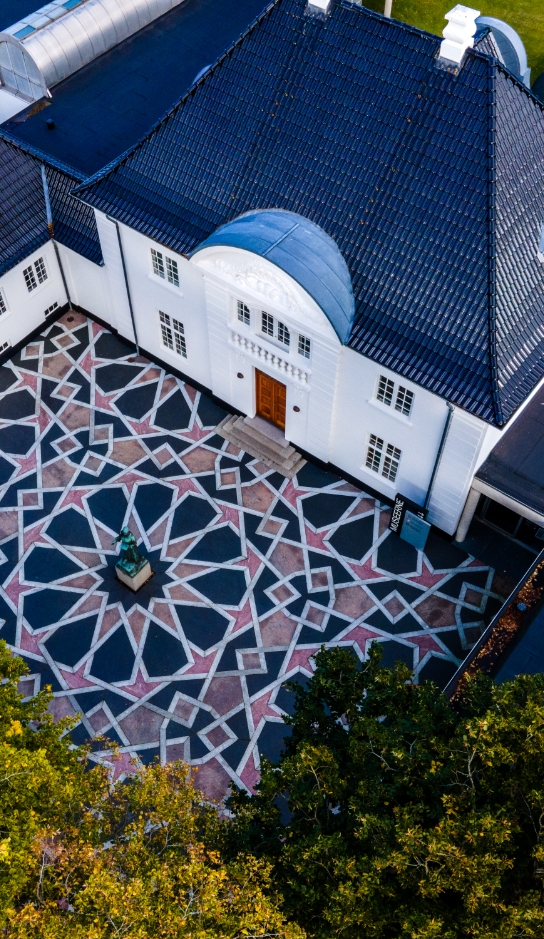Heerup, Henry
Henry Heerup (1907-1993) is one of the great storytellers of Danish art. The fundamental source of his narrative is ordinary life – everyday life, love, sexuality, family, children, the woman, the daily bicycle ride.
In the art work of Heerup common objects become universal symbols of the big and impalpable sides of existence: Life and death. With an imagery that is fertile, imaginative and entirely his own, Heerup deals with the urgent questions of life on a level, which both children and adults can understand.
A diligent draughtsman
Already as a child Henry Heerup was a diligent draughtsman. After short periods of apprenticeship as a stone cutter, sign writer, bronze caster and lithographer he was admitted to Kunstakademiets Malerskole (School of Painters at the Danish Royal Academy of Fine Arts) in 1927.
For a short while he attended courses at Billedhuggerskolen (School of Sculpture), but his teacher Einar Utzon-Frank informed him that he lacked the talent to become a sculptor. He created sculptures by carving the figure out of a lump of clay instead of modelling it as he was told to.
Like 'Jellingestenen'
All through his life Heerup worked with painting, sculpture, etching and drawing. Among fellow artists he first became known as a sculptor. He worked mainly in granite, carving – inspired by the Roman stone cutters – odd creatures and figures out of the stone and painting them in strong colours like Jellingstenen (Danish runic stone).
Junk sculptures
In artistic circles he caught most attention, though, with his junk sculptures, for which old perambulator wheels, bedposts, broken toys – old trash that Heerup would find on his daily bicycle rides – were assembled into odd and fantastic figures. It was the stone and junk sculptures that Heerup displayed together with woks by Ejler Bille and others Danish avant-garde artist that gathered in the group linien in 1934. Later Heerup participated in Høst-udstillingen and at the Cobra exhibitions in Amsterdam in 1949 and in Liège in 1952.
Popular and public paintings
It was, however, as a painter and graphic artist that Heerup gained his popular breakthrough. In his early works he painted pictures in a naturalistic idiom of the animals in the Zoo. But early on he broke with naturalism’s conception of space and light and developed a form of his own. An ornamental flat painting, where the contour line is important, and where the colours are used as symbol colours and in their own right.
Henry Heerup has created many decorative works for both institutions and the public space. In Holstebro Town Hall hangs the painting ”Paradisets Have” (Garden of Eden) from 1945, among others.
"My work is play and I like to play all day. Adults almost always associate play with children's play, which is wrong. Everything is play when what you are doing is a free expression of something inside of you. It is a form of life and desire, an expression of life. This is also the case with art, which is my work and my play."
- Henry Heerup

